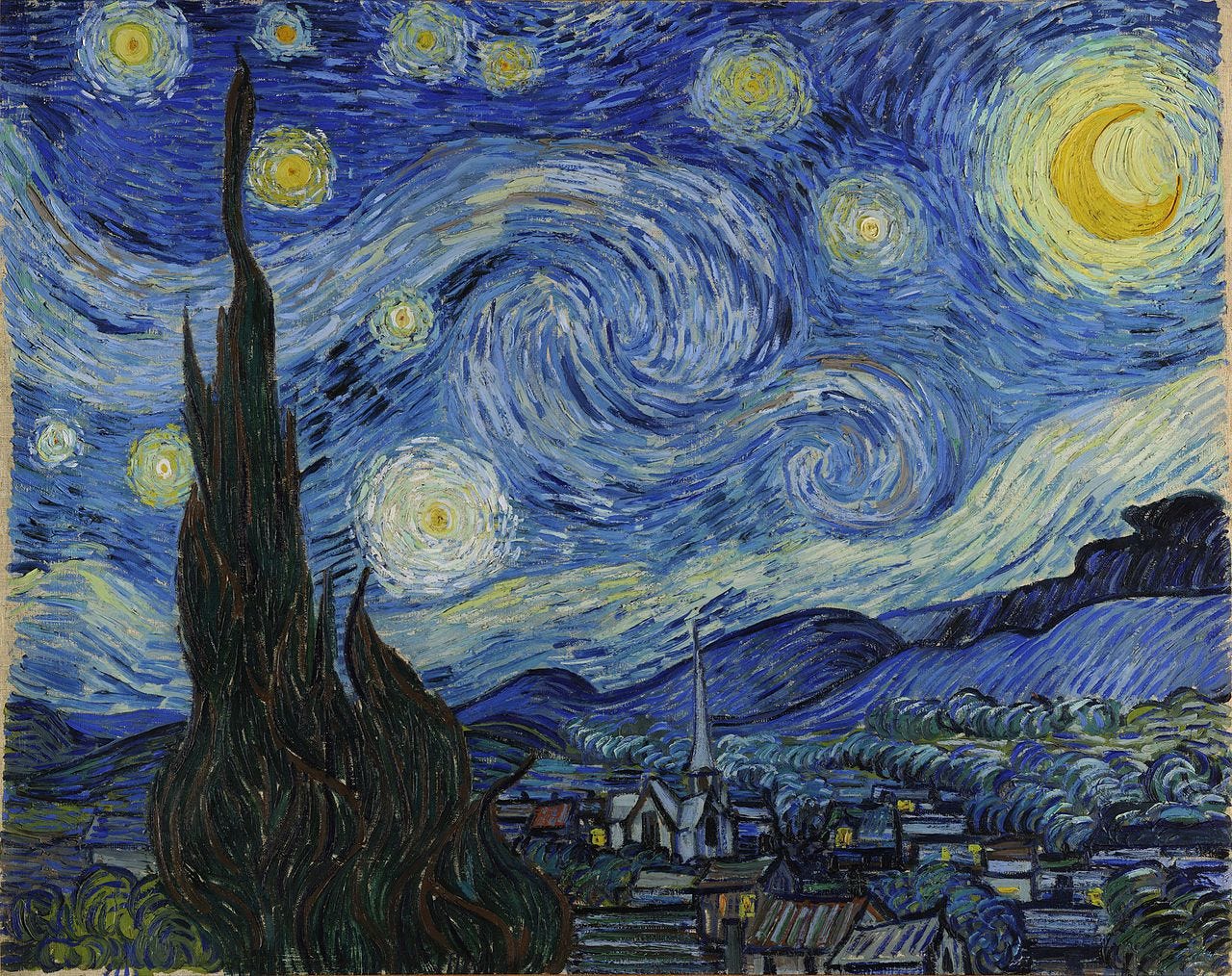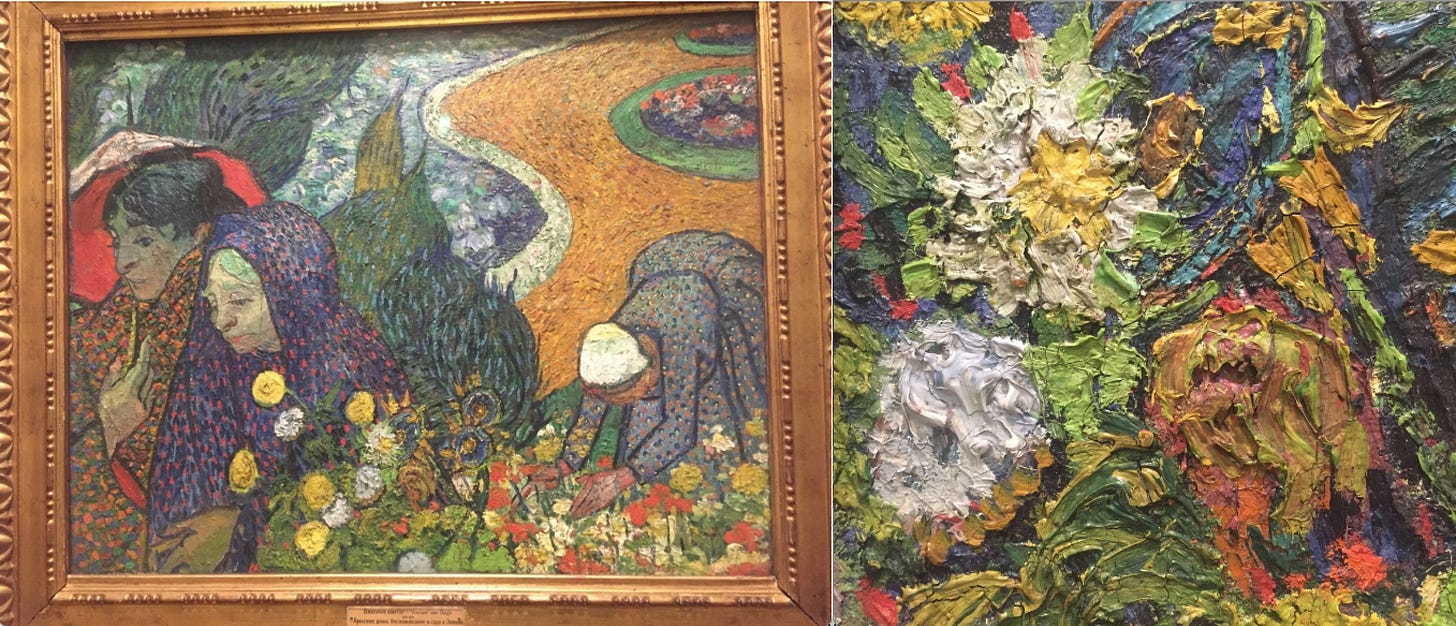Exploration is Key for a “Hot Streak” at Work
A new study sheds light on the behavior that precedes our most impactful work
Welcome to Range Widely, where I help you step outside your lane for a few minutes each week. You can subscribe here:
and see previous posts here; I respond to most comments.
This post ends with an excerpt of a remarkable letter, so I hope you’ll stick around for it, or — if you’re in a rush — skip to the last section.
Every few months, a paper comes out that is so directly relevant to topics I wrote about in Range that several friends send it to me on the same day — “Have you seen this??” — which I love.
That happened recently, with a new study of career “hot streaks.” I won’t go into the study in detail, because an excellent journalist (Derek Thompson of the Atlantic) already did. But in a nutshell:
Researchers analyzed the careers of 26,500 artists, film directors, and scientists in an attempt to figure out what predicted their greatest works. Two main themes emerged.
First: for most people, their most impactful works came clustered as part of a “hot streak,” and most only ever had one — two if they were lucky. Second: no matter the individual’s age, a hot streak reliably followed a period of broad exploration.
There is a wealth of research literature on what’s called the “explore/exploit trade-off.” “Explore” is just what it sounds like — trying new avenues, solutions, or ideas, and seeking new knowledge or skills. “Exploit” means digging into what you already know and maximizing the benefit from it. Getting the balance right is crucial. As I noted in a previous post, organizations tend to go into exploit-only mode when competition intensifies, which can make sense in the short-term, but turn disastrous in the long-term.
That was a motif of Range — that sensible short-term strategies can undermine long-term development. Whether developing athletic skills, or choosing a course of study or a career, or cultivating a work project, a wealth of research suggests that a “sampling period” (i.e. explore) sets one up for success when they eventually focus (i.e. exploit).
I Wanna Get (Work)-Personal For a Sec...
My first book, The Sports Gene, was a surprise New York Times bestseller. I had so little idea that it would take on a life of its own that I left Sports Illustrated for the investigative non-profit ProPublica just as it was coming out. It’s an understatement to say that that’s not really an advisable move with a sports book coming out.
But I felt like the book was my sports capstone project: the exploit of my years as SI’s science writer. I wanted to go back into explore mode. Except, suddenly there was a lot of pressure not to do that, and instead to brand myself as the sports science guy and write another, similar book, and quickly. The pressure was to keep exploiting.
I found it difficult to navigate. The book had consumed me and stretched my competence. I wasn’t ready for another one. A professional advisor told me: “You’d be an idiot to let it be five years before you have another book out.” (That’s the SFW version of his advice.)
Well, readers, it was six years, and it turned out fine. Range has been the most impactful work of my career. Beyond that, the research I had to do about art and music to write it fundamentally changed the way I experience a concert, or a museum. It enriched my life in ways I couldn’t anticipate. My dad’s a good guitar player; I don’t play at all. During reporting, I started going to guitar lessons with him, just as a fly on the wall to watch and listen; soon I started to be able to talk to him about a deep interest of his that I’d never really asked about. Exploration was definitely the right move for me.
The challenge, of course, is that now I’m once again in explore mode (in case you couldn’t tell from the name of this newsletter). Explore mode is invigorating; it’s also frightening. It involves the shedding of certainty and of a work identity.
By the time any major project is out in the world for consumption, I’m already a bewildered beginner at whatever’s next. In my head, it feels like my own personal version of the Buddhist Wheel of Becoming, with its cycle of life, death, rebirth and suffering. Yes, suffering. A joke I once heard: “Write about what you know — how writing ruined your life.”
Van Gogh’s Letter
In my current exploration phase, I’ve been thinking a lot about a letter I read while reporting for Range. It was written by Vincent Van Gogh to his younger brother, Theo. During reporting, I learned that every work of Van Gogh’s that most people would recognize — whether on a poster, a vodka bottle, socks, or, ya know, in a museum — was created in just the last two years of his life. His explosion of creativity was preceded by a tortuous life of exploration.
Before he even started exploring as an artist, Van Gogh had been a student, an art dealer, a teacher, a tutor, a bookstore clerk, a pastor-in-training, a preacher-in-training, and an itinerant catechist. He had an immense work ethic; his minister father preached of the sower, who must put in work now so he can reap later: “Think of all the fields that were turned down by shortsighted people.” The idea intoxicated Van Gogh. But each time he started enthusiastically down a path, he’d show spectacular promise initially — and then, just as spectacularly, he’d flame out.
The particular letter that lodged in my brain — and that has resurfaced as I explore — is Vincent’s missive to his brother in which he poured his heart out, sharing how hard he was trying to find a direction, and how lost he felt. Van Gogh likened himself to a caged bird in spring who sees other birds flying past and feels in his bones that there is something important he must do, but cannot recall what it is, and so he tortures himself inside his cage searching for the answer.
To me, the letter is breathtaking just as art — a belletristic work. (I just learned that word, and I try to use new words right away). But there’s something else. Van Gogh’s very next letter to his brother is brief: “I’m writing to you while drawing and I’m in a hurry to go back to it.”
As it happened, in that moment of despair, when Van Gogh wrote that heart-wrenching self-portrait of a lost but determined man, he was just a moment away from starting his life’s work.
I took these photos of "Memory of a Garden at Etten" at the Hermitage Museum in Russia. It isn't one of Van Gogh's most famous, but it's striking in person. On the right is a close-up. After years of experimentation, Van Gogh arrived at his textured, "impasto" style
I would have loved to excerpt Van Gogh’s (translated) letter at more length in Range, but it wasn’t the right place for it. So I’d like to end this post with a few paragraphs of that letter. And if you’ve gotten this far, I hope you’ll take a moment after you finish to just sit with your thoughts. Thus, I’ll sign off in advance so as not to disturb you: thank you for reading; please do share this post if you liked it; see you next week. Without further ado:
I’m writing you somewhat at random whatever comes into my pen; I would be very happy if you could somehow see in me something other than some sort of idler.
Because there are idlers and idlers, who form a contrast.
There’s the one who’s an idler through laziness and weakness of character, through the baseness of his nature; you may, if you think fit, take me for such a one. Then there’s the other idler, the idler truly despite himself, who is gnawed inwardly by a great desire for action, who does nothing because he finds it impossible to do anything since he’s imprisoned in something, so to speak, because he doesn’t have what he would need to be productive, because the inevitability of circumstances is reducing him to this point. Such a person doesn’t always know himself what he could do, but he feels by instinct, I’m good for something, even so! I feel I have a reason for being! I know that I could be a quite different man! For what then could I be of use, for what could I serve! There’s something within me, so what is it! That’s an entirely different idler; you may, if you think fit, take me for such a one.
In the springtime a bird in a cage knows very well that there’s something he’d be good for; he feels very clearly that there’s something to be done but he can’t do it; what it is he can’t clearly remember, and he has vague ideas and says to himself, ‘the others are building their nests and making their little ones and raising the brood’, and he bangs his head against the bars of his cage. And then the cage stays there and the bird is mad with suffering. ‘Look, there’s an idler’, says another passing bird — that fellow’s a sort of man of leisure. And yet the prisoner lives and doesn’t die; nothing of what’s going on within shows outside, he’s in good health, he’s rather cheerful in the sunshine. But then comes the season of migration. A bout of melancholy — but, say the children who look after him, he’s got everything that he needs in his cage, after all — but he looks at the sky outside, heavy with storm clouds, and within himself feels a rebellion against fate. I’m in a cage, I’m in a cage, and so I lack for nothing, you fools! Me, I have everything I need! Ah, for pity’s sake, freedom, to be a bird like other birds!






